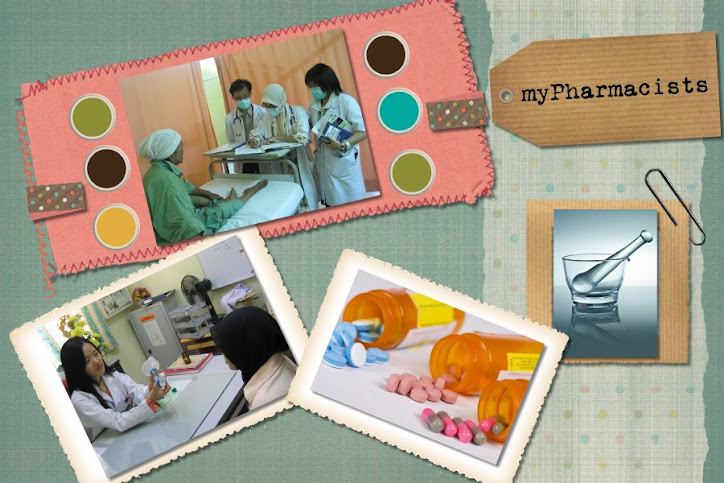
Thursday, December 23, 2010
Thursday, December 2, 2010
Some Facts about Eye Drops
Some learning points from the workshop that I would like to share with you all:
When instilling eye drops, 1 drop is sufficient as the ideal volume of a drop that the eye can hold, especially the conjunctiva cul de sac is 10-15uL and the typical volume of an eye drop is 40uL.
Sequence of instillation (if more than one type of topical drugs are to be used):
1) solution 2) suspension 3) Suspension/Gel
For contact lens wearer, instill the eye drop first, then wait for 15 minutes before putting on the contact lens.
Tear film is a barrier to effective drug delivery. Tear film penetration can be increased by manually blocking the nasolacrimal duct and tilting the head backwards. Occlusion of the nasolacrimal ducta after instillation of eye drop, minimises systemic absorption.Examples of systemic side effects: Gutt chloramphenicol may cause aplastic anaemia, Gutt timolol may cause acute exacerbation of bronchial asthma.

Once an eye drop passes the tear film, it penetrates the cornea which is the major site of absorption for topical drugs.
1 drop of eye drop: only 50% reach the site of action.
The iris acts as a reservoir for drugs instilled into the eye. Prostaglandin analogues used for glaucoma may change colour of iris as they stay in the iris.
Hydrophilic drugs do not enter the retina easily. They are prevented by tight junctions complexes at the retinal pigment epithelium, hence retinal toxicity is seen in certain drugs. E.g. Gutt. chloramphenicol may cause optic nerve toxicity.
Caution must be taken when recommending/prescribing steroid eye drops as they have contraindications and adverse effects. Adverse effects include: elevation of intraocular presure and possibly glaucoma with nerve damage, cataract formation, delayed wound healing, worsening corneal ulcers especially if bacterial or fungal.
One of the points to consider when recommending eye drop to patient-the types of preservatives used.
Wednesday, December 1, 2010
Mechanism-Based Therapies for Heart Failure and Cardiac Arrhythmias
TOPICS COVERED IN MECHANISM-BASED THERAPIES FOR HEART FAILURE AND CARDIAC ARRHYTHMIAS
Introduction to excitation-contraction coupling - History of the field of EC coupling - Introduction to the ryanodine receptor/calcium release channel (RyR2) - Mechanisms that regulate the RyR2 channel during stress - Defective regulation of RyR2 in heart failure - Evidence that diastolic sarcoplasmic reticulum (SR) calcium leak causes heart failure and arrhythmias in vivo - Novel therapeutic approaches to treating heart failure and preventing sudden cardiac death by fixing the leak in RyR2 channels
How to cite this talk:
Marks, A. (2007), "Mechanism-Based Therapies for Heart Failure and Cardiac Arrhythmias", in Simpson, A. (ed.),Calcium Signaling: Regulation, Mechanisms, Effectors, Role in Disease and Recent Advances, The Biomedical & Life Sciences Collection, Henry Stewart Talks Ltd, London (online at http://hstalks.com/bio)




